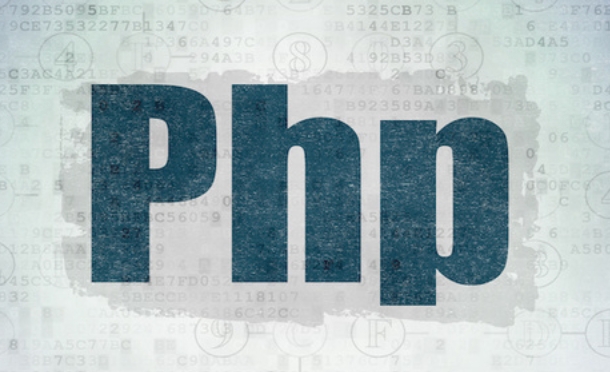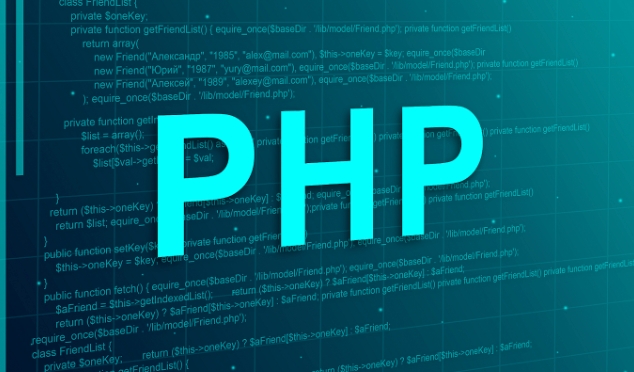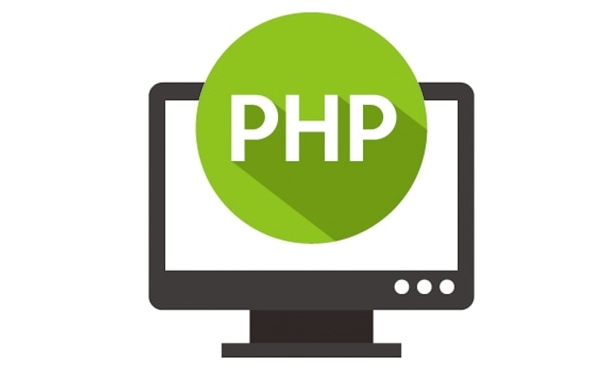 Backend Development
Backend Development
 PHP Tutorial
PHP Tutorial
 PHP environment configuration: debugging tools and extension installation
PHP environment configuration: debugging tools and extension installation
PHP environment configuration: debugging tools and extension installation
Jun 27, 2025 am 01:53 AMXdebug is the core tool of PHP debugging, and can be used to implement breakpoint debugging with the IDE; lightweight tools such as var_dump(), error_log() and Laravel's dd() are suitable for simple troubleshooting. Installation method varies according to system: Linux uses pecl or package manager, macOS uses brew, and Windows enables dll files. Key configurations include enabling error reporting, setting log paths, IDE port synchronization, and using browser plug-ins to assist debugging. Ignoring these details may cause debugging failures.

When configuring a PHP environment, the installation of debugging tools and extensions is an inescapable link. Many novices often get stuck at this step when building a local development environment: they don’t know which tools to install, how to install, and how to use them after installation. In fact, as long as you clarify your thoughts, this matter is not that complicated.

Recommended commonly used debugging tools
There are many debugging tools for PHP, but only those that are really practical. Xdebug is the most commonly used debugging extension. It can implement breakpoint debugging, stack trace and other functions in conjunction with IDEs (such as PhpStorm or VS Code). Another lightweight option is the built-in var_dump() and error_log() of PHP, which are suitable for simple troubleshooting.

If you want to view variable content visually, Laravel's own dd() function or Symfony's VarDumper component is also a good choice. Their outputs are clearer and the structure is easier to understand.
- Recommended combination:
- Xdebug IDE debugging
- VarDumper View variables
- Logging (
error_log()or Monolog)
Basic ways to install PHP extensions
The operation of different systems is slightly different when installing and extending. In Linux, pecl or package manager (such as apt and yum), brew can be used for macOS, and dll extension can be enabled through the php.ini file.

Taking Xdebug as an example, the following process can be used on Linux:
- Compile and install using
phpize(for manual compilation) - Or run
pecl install xdebugdirectly - After the installation is completed, modify
php.inito addzend_extension=xdebug.so - Restart the service to make the configuration take effect
If you are using integrated environments like XAMPP and WAMP, it usually comes with some common extensions, which you just need to uncomment in the configuration file to enable.
Note: The corresponding extension versions of different PHP versions may be different. Remember to confirm compatibility before installation.
Several key points in configuring a debugging environment
Whether the debugging environment is easy to use depends on whether the configuration is in place. The following points are easily overlooked, but are particularly important:
- Turn on error reporting : Make sure
display_errors = Onanderror_reporting = E_ALL - Set the appropriate log path : point
error_logto a writable file for easier subsequent troubleshooting - IDE sets the correct port : the default is 9003. If you have changed it, remember to adjust it synchronously.
- Browser plug-in assisted debugging : Some plug-ins can trigger Xdebug's remote debugging mode, such as Xdebug Helper for Chrome
Sometimes you have installed Xdebug, but it just doesn't work. It's very likely that these places are not paired.
Basically that's it. Don't underestimate these details, they determine whether you can quickly locate problems during the development process. Once configured, it will save you a lot of worry in the future.
The above is the detailed content of PHP environment configuration: debugging tools and extension installation. For more information, please follow other related articles on the PHP Chinese website!

Hot AI Tools

Undress AI Tool
Undress images for free

Undresser.AI Undress
AI-powered app for creating realistic nude photos

AI Clothes Remover
Online AI tool for removing clothes from photos.

Clothoff.io
AI clothes remover

Video Face Swap
Swap faces in any video effortlessly with our completely free AI face swap tool!

Hot Article

Hot Tools

Notepad++7.3.1
Easy-to-use and free code editor

SublimeText3 Chinese version
Chinese version, very easy to use

Zend Studio 13.0.1
Powerful PHP integrated development environment

Dreamweaver CS6
Visual web development tools

SublimeText3 Mac version
God-level code editing software (SublimeText3)

Hot Topics
 How to combine two php arrays unique values?
Jul 02, 2025 pm 05:18 PM
How to combine two php arrays unique values?
Jul 02, 2025 pm 05:18 PM
To merge two PHP arrays and keep unique values, there are two main methods. 1. For index arrays or only deduplication, use array_merge and array_unique combinations: first merge array_merge($array1,$array2) and then use array_unique() to deduplicate them to finally get a new array containing all unique values; 2. For associative arrays and want to retain key-value pairs in the first array, use the operator: $result=$array1 $array2, which will ensure that the keys in the first array will not be overwritten by the second array. These two methods are applicable to different scenarios, depending on whether the key name is retained or only the focus is on
 php regex for password strength
Jul 03, 2025 am 10:33 AM
php regex for password strength
Jul 03, 2025 am 10:33 AM
To determine the strength of the password, it is necessary to combine regular and logical processing. The basic requirements include: 1. The length is no less than 8 digits; 2. At least containing lowercase letters, uppercase letters, and numbers; 3. Special character restrictions can be added; in terms of advanced aspects, continuous duplication of characters and incremental/decreasing sequences need to be avoided, which requires PHP function detection; at the same time, blacklists should be introduced to filter common weak passwords such as password and 123456; finally it is recommended to combine the zxcvbn library to improve the evaluation accuracy.
 How to handle File Uploads securely in PHP?
Jul 08, 2025 am 02:37 AM
How to handle File Uploads securely in PHP?
Jul 08, 2025 am 02:37 AM
To safely handle PHP file uploads, you need to verify the source and type, control the file name and path, set server restrictions, and process media files twice. 1. Verify the upload source to prevent CSRF through token and detect the real MIME type through finfo_file using whitelist control; 2. Rename the file to a random string and determine the extension to store it in a non-Web directory according to the detection type; 3. PHP configuration limits the upload size and temporary directory Nginx/Apache prohibits access to the upload directory; 4. The GD library resaves the pictures to clear potential malicious data.
 PHP Variable Scope Explained
Jul 17, 2025 am 04:16 AM
PHP Variable Scope Explained
Jul 17, 2025 am 04:16 AM
Common problems and solutions for PHP variable scope include: 1. The global variable cannot be accessed within the function, and it needs to be passed in using the global keyword or parameter; 2. The static variable is declared with static, and it is only initialized once and the value is maintained between multiple calls; 3. Hyperglobal variables such as $_GET and $_POST can be used directly in any scope, but you need to pay attention to safe filtering; 4. Anonymous functions need to introduce parent scope variables through the use keyword, and when modifying external variables, you need to pass a reference. Mastering these rules can help avoid errors and improve code stability.
 Commenting Out Code in PHP
Jul 18, 2025 am 04:57 AM
Commenting Out Code in PHP
Jul 18, 2025 am 04:57 AM
There are three common methods for PHP comment code: 1. Use // or # to block one line of code, and it is recommended to use //; 2. Use /.../ to wrap code blocks with multiple lines, which cannot be nested but can be crossed; 3. Combination skills comments such as using /if(){}/ to control logic blocks, or to improve efficiency with editor shortcut keys, you should pay attention to closing symbols and avoid nesting when using them.
 Tips for Writing PHP Comments
Jul 18, 2025 am 04:51 AM
Tips for Writing PHP Comments
Jul 18, 2025 am 04:51 AM
The key to writing PHP comments is to clarify the purpose and specifications. Comments should explain "why" rather than "what was done", avoiding redundancy or too simplicity. 1. Use a unified format, such as docblock (/*/) for class and method descriptions to improve readability and tool compatibility; 2. Emphasize the reasons behind the logic, such as why JS jumps need to be output manually; 3. Add an overview description before complex code, describe the process in steps, and help understand the overall idea; 4. Use TODO and FIXME rationally to mark to-do items and problems to facilitate subsequent tracking and collaboration. Good annotations can reduce communication costs and improve code maintenance efficiency.
 How Do Generators Work in PHP?
Jul 11, 2025 am 03:12 AM
How Do Generators Work in PHP?
Jul 11, 2025 am 03:12 AM
AgeneratorinPHPisamemory-efficientwaytoiterateoverlargedatasetsbyyieldingvaluesoneatatimeinsteadofreturningthemallatonce.1.Generatorsusetheyieldkeywordtoproducevaluesondemand,reducingmemoryusage.2.Theyareusefulforhandlingbigloops,readinglargefiles,or
 How to create an array in php?
Jul 02, 2025 pm 05:01 PM
How to create an array in php?
Jul 02, 2025 pm 05:01 PM
There are two ways to create an array in PHP: use the array() function or use brackets []. 1. Using the array() function is a traditional way, with good compatibility. Define index arrays such as $fruits=array("apple","banana","orange"), and associative arrays such as $user=array("name"=>"John","age"=>25); 2. Using [] is a simpler way to support since PHP5.4, such as $color





